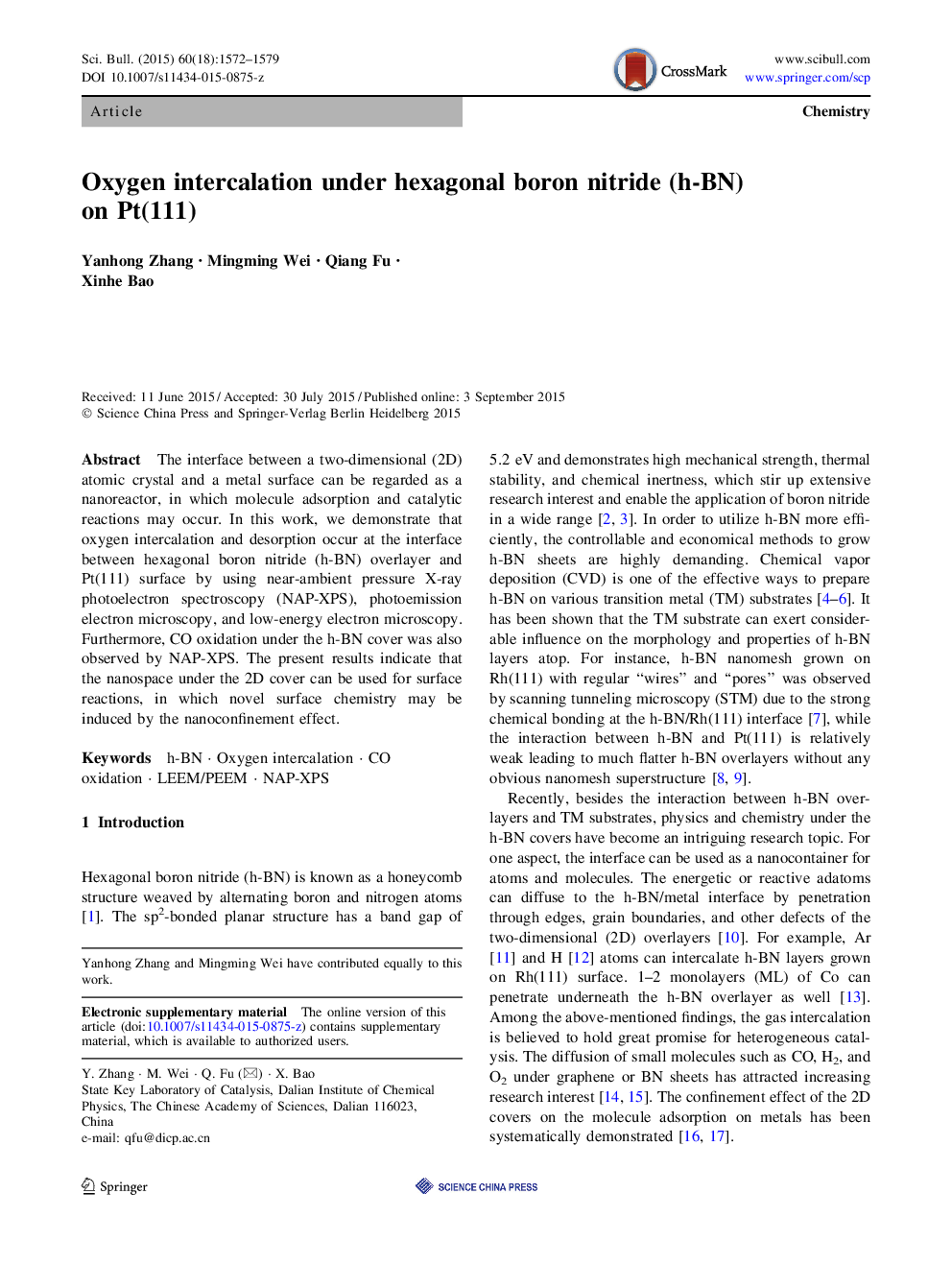| Article ID | Journal | Published Year | Pages | File Type |
|---|---|---|---|---|
| 5789180 | Science Bulletin | 2015 | 8 Pages |
Abstract
The interface between a two-dimensional (2D) atomic crystal and a metal surface can be regarded as a nanoreactor, in which molecule adsorption and catalytic reactions may occur. In this work, we demonstrate that oxygen intercalation and desorption occur at the interface between hexagonal boron nitride (h-BN) overlayer and Pt(111) surface by using near-ambient pressure X-ray photoelectron spectroscopy (NAP-XPS), photoemission electron microscopy, and low-energy electron microscopy. Furthermore, CO oxidation under the h-BN cover was also observed by NAP-XPS. The present results indicate that the nanospace under the 2D cover can be used for surface reactions, in which novel surface chemistry may be induced by the nanoconfinement effect.
Keywords
Related Topics
Physical Sciences and Engineering
Chemistry
Chemistry (General)
Authors
Yanhong Zhang, Mingming Wei, Qiang Fu, Xinhe Bao,
